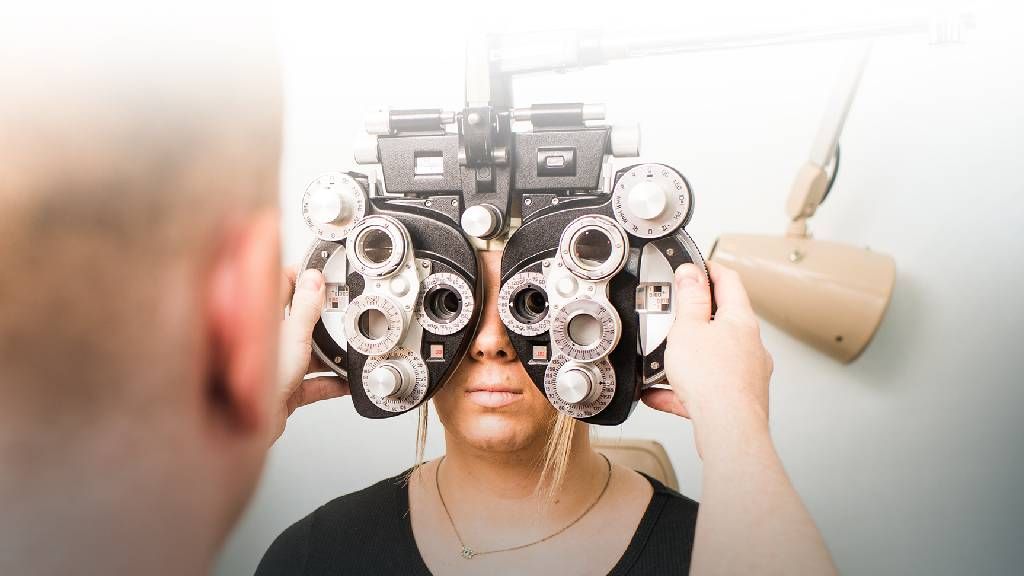Discover the Best Eye Center Andalusia: Advanced Vision Solutions
Discover the Best Eye Center Andalusia: Advanced Vision Solutions
Blog Article
Recognizing the Different Vision Modification Procedures Available for Clearer Sight
In the world of vision correction treatments, a wide range of choices exist to attend to refractive errors and supply individuals with clearer view. From the extensively recognized LASIK surgery to much less invasive treatments like PRK and implantable lenses, the area of ophthalmology offers a series of techniques tailored to match different demands and preferences. Each treatment comes with its own set of factors to consider, advantages, and possible threats. Understanding the subtleties of these vision adjustment techniques is critical for making notified decisions about one's visual health and wellness. Allow's check out the details of these treatments and dropped light on the path to accomplishing improved vision clarity.
LASIK Surgery
LASIK surgical procedure is a typical refractive treatment made use of to fix vision troubles such as astigmatism, nearsightedness, and farsightedness. This medical method, which means Laser-Assisted sitting Keratomileusis, aims to reshape the cornea to enhance just how light is concentrated on the retina, eventually enhancing vision quality. Throughout the treatment, a slim flap is developed on the cornea, and a laser is utilized to remove precise amounts of cells to reshape it suitably. This improving enables for light to be precisely focused onto the retina, dealing with refractive mistakes.
Among the key advantages of LASIK surgical procedure is the fast enhancement in vision experienced by patients. Lots of individuals discover a considerable enhancement in their sight immediately after the treatment. Additionally, most patients report marginal pain and discomfort during the surgical treatment and recuperation duration. The recovery time for LASIK is fairly quick, with numerous people returning to their everyday tasks within a day or more post-operation. On the whole, LASIK surgical procedure is a preferred selection for individuals looking for a lasting solution for their vision issues.
PRK Procedure

PRK is an ideal choice for people with slim corneas or those at a greater risk of eye injuries, as it does not involve developing a corneal flap. The healing procedure for PRK is slightly longer contrasted to LASIK, as the epithelium needs time to restore. People may experience pain and blurry vision for a few days following the treatment.
Regardless of the longer healing time, PRK can yield exceptional outcomes in vision enhancement, making it a beneficial alternative for those who might not be suitable prospects for LASIK surgical treatment. - Eye Center Andalusia
Implantable Lenses
In comparison to PRK where the cornea is improved straight, implantable lenses use one more method for remedying vision by putting synthetic lenses inside the eye. This treatment is especially advantageous for people with high degrees of astigmatism, farsightedness, or nearsightedness that might not appropriate candidates for laser surgeries like LASIK or PRK.
Implantable lenses, additionally called phakic intraocular lenses, work by supplementing the eye's natural lens with a man-made one. These lenses can be placed in front of the natural lens (former chamber) or behind the iris and in front of the natural lens (posterior chamber) By readjusting the power and positioning of these lenses, ophthalmologists can successfully remedy refractive mistakes and improve aesthetic skill.
One benefit of implantable lenses is that they are exchangeable and removable, providing versatility for future changes. As with any medical treatment, there are threats involved, such as infection or cataract formation. Clients thinking about implantable lenses ought to consult with an eye treatment professional to figure out the most ideal option based upon their specific needs and eye health.
Corneal Rings

The treatment for inserting corneal rings is minimally invasive and reasonably fast, typically carried out as an outpatient procedure. During the surgical treatment, the ophthalmologist makes a tiny cut in the cornea and inserts the rings at a particular depth. When in location, the rings assist to reshape the cornea, giving a smoother surface for light to enter the eye, which can lead to more clear vision.
Corneal rings are considered a relatively easy to fix treatment, as they can be removed or replaced if needed. While they might not completely remove the requirement for glasses or call lenses, corneal rings can significantly improve vision high quality and general aesthetic comfort for people with keratoconus or various other corneal abnormalities.
Refractive Lens Exchange
Complying with the adjustment of corneal abnormalities with procedures like corneal rings, an additional vision modification method that can address refractive errors is Refractive Lens Exchange (RLE) RLE is a procedure that involves changing the eye's natural lens with an artificial intraocular lens (IOL) to correct refractive errors such as nearsightedness, presbyopia, and farsightedness. This treatment is particularly useful for people that may not appropriate candidates for treatments like LASIK or see this page PRK due to factors such as thin corneas or high refractive errors.
Recuperation time for RLE is this contact form fairly quick, and patients can anticipate enhanced vision soon after the treatment. As with any medical procedure, potential risks and issues exist, so a comprehensive appointment with an eye treatment expert is vital to determine if RLE is the right vision adjustment option.
Verdict

In the world of vision modification procedures, a plethora of choices exist to resolve refractive mistakes and provide individuals with clearer sight.LASIK surgical procedure is an usual refractive treatment made use of to correct vision issues such as nearsightedness, farsightedness, and astigmatism.While also a common refractive procedure, the PRK (Photorefractive Keratectomy) method varies from LASIK surgical treatment in its strategy to remedying vision troubles.Adhering to the adjustment of corneal abnormalities with procedures like corneal rings, an additional vision modification strategy that can address refractive errors is Refractive Lens Exchange (RLE) LASIK surgical procedure, PRK treatment, implantable lenses, corneal rings, and refractive lens exchange are all options that can Find Out More address different vision problems.
Report this page